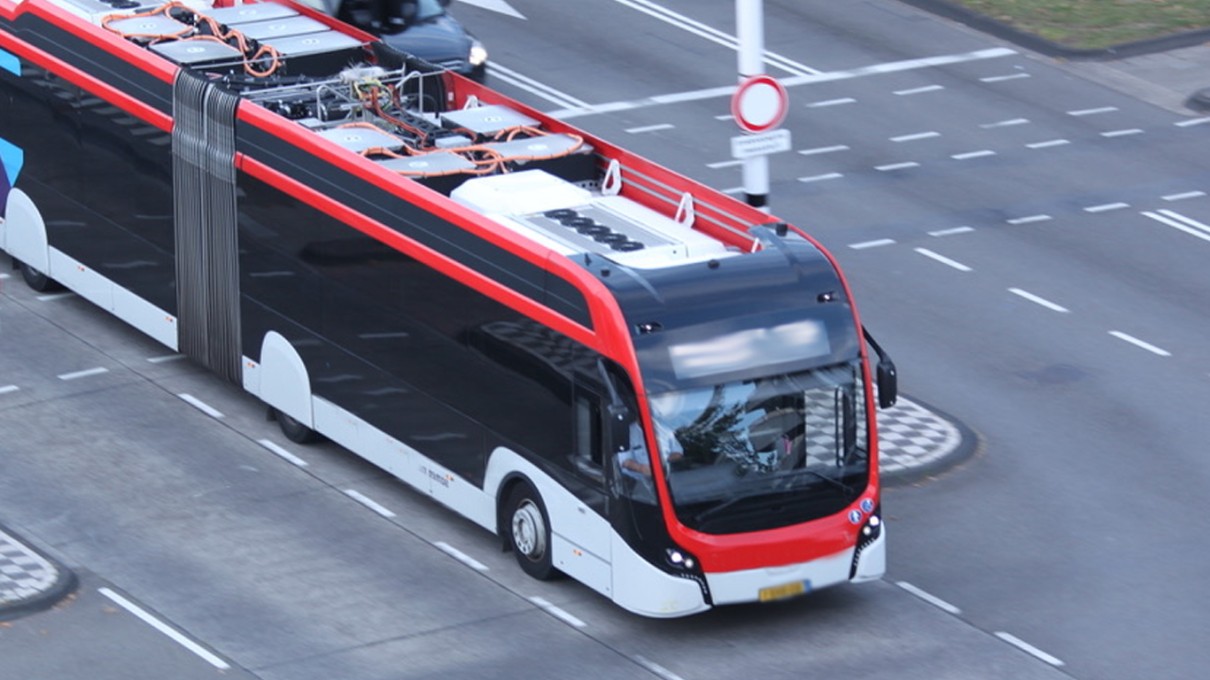Page content
Smart charging management from the start: how EV fleets are saving electric
How can electric vehicle fleet operators streamline their charging infrastructure – and still ensure their buses are always on time? The Dutch company ChargeSim has developed a simulation tool which companies can use to precisely define their charging point requirements and combine them with intelligent organisational concepts.
Companies that operate large electric bus or HGV fleets automatically consume a large amount of electricity. Their fleets must be fully recharged after use in order to be ready for service again.
“However, many companies install charging capacity that by far exceeds their needs“, said Dr. Andrew Rutgers, CEO of the Dutch startup ChargeSim, at the InnoTrans Mobility+ Corner. “If you operate 50 buses you do not necessarily need 50 charging points.” And nothing is more costly than charging all vehicles simultaneously at the end of the day. That produces a spike in electricity consumption and unnecessarily high costs.”
Over-equipping costs money
The key to electricity and cost efficiency is smart charging management. ChargeSim has developed analytical software that enables fleet operators and charging point providers to precisely calculate their requirements based on the number of charging points, their corresponding capacity and the electricity grid output. “We show them what they really need before they start digging up the ground“, said Rutgers.
Using the SaaS platform, companies can input numerous planning parameters: hundreds of vehicles, thousands of bus runs, various charging point types, parking bay layout, workflows, electricity rates and times of day. Based on this input, the software calculates a wide range of scenarios and efficient workflow processes.
Rescheduled charging, flexible charging times
Charging processes can be rescheduled so as to avoid all vehicles being charged simultaneously or during hours when rates are particularly high, for example. For instance, drivers can move fully charged buses to a separate parking area and connect the next vehicle to the vacated charging point. Rescheduling charging away from periods when rates are particularly high to off-peak times is an effective instrument, as is avoiding consumption spikes, which result in spiralling electricity bills for companies.
Installing different types of charging devices and distributing them on the premises can also significantly reduce costs. If a vehicle is scheduled for a longer break and can take time to charge, then a 30 kW charging device may be sufficient. If the bus service timetable demands a quicker charge, then a higher-capacity, 150 kW or even 450 kW device will be needed – but not for every charge and vehicle.
Efficient bus services precede lowering costs
“Badly managed charging processes are always the most expensive option“, said Rutgers. “Sometimes a partial solution can help to reduce electricity costs, while smart charging management is best.“ And one thing is always clear: “Efficient bus services come first. For operators, the most important thing is that their fleets run on time. Only then does reducing costs follow.”
New exhibition segment – Mobility+
At InnoTrans 2022, for the first time in the established Public Transport segment supplementary mobility services were featured in a themed exhibition area called Mobility+. This is where companies exhibiting supplementary mobility services can meet domestic and international transport companies, transport networks and administrations, and display their intermodal concepts and systems to the individual sectors. For additional information: https://www.innotrans.de/de/besucher/mobility/

Photo: Charge Sim

